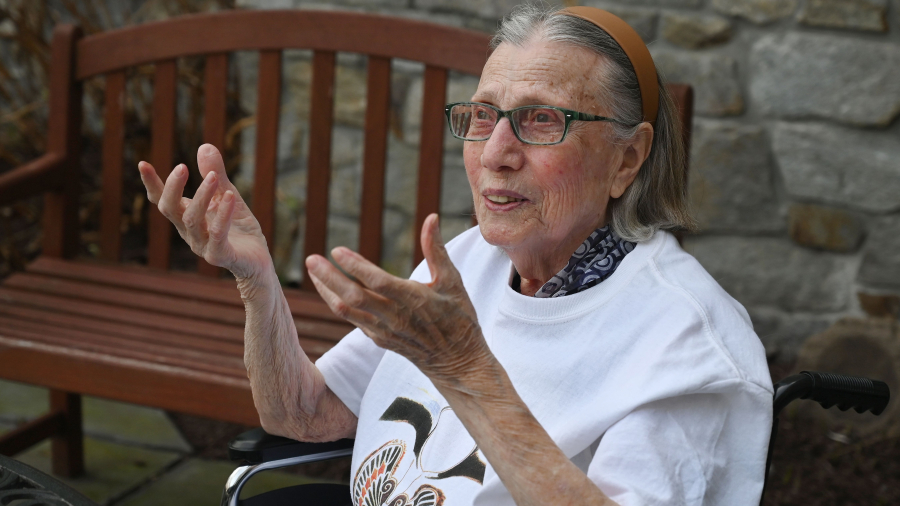BALTIMORE — Baltimore artist Gigi McKendric laid a sample of her career — poems, art and grant paperwork — onto a table at Levindale Hebrew and Geriatric Center.
The work ranged from children’s books to poetry paying homage to Ukraine in the wake of the country’s invasion by Russia. McKendric thumbed through her plan for a living memorial dedicated to the seven girls killed during the Island of Peace massacre at Naharayim in Jordan in 1997 before discussing a whimsical poem she wrote about a “Balloon Man” who brings smiles to children around the world.
“I’m fairly poorly organized,” McKendric said.
A survivor of both the Holocaust and an earthquake that destroyed her hometown in Romania, McKendric believes she was saved for a reason. Her works, often inspired by tragic world events, aim to emphasize inhumanity and suffering while communicating a “glimmer of light” coming from the horror.
McKendric, who does not know her age because her birth records were destroyed in the earthquake, was one of about a thousand Jewish orphans allowed to immigrate into Canada after World War II. There, English Canadian painter and educator Arthur Lismer took her under his wing.



